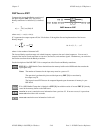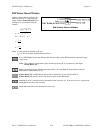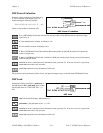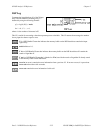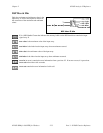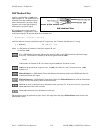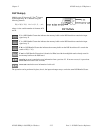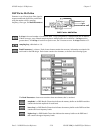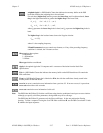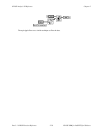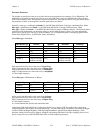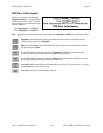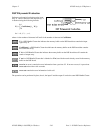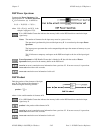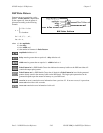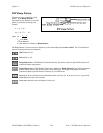
Chapter 2 NI-DSP Analysis VI Reference
NI-DSP SRM for LabVIEW for Windows 2-57 Part 3: NI-DSP Function Reference
weighted ripple is a DSP Handle Cluster that indicates the memory buffer on the DSP
board that contains the weighting factor for each band.
For each band, higher freq must be greater than lower freq, and for adjacent bands, lower
freq in the higher band must be greater than higher freq in the lower band,
f
h
i
> f
l
i
, for i = 0, 1, 2, …, m-1,
f
l
i+1
> f
h
i
, for i = 0, 1, 2, …, m-2,
where f
l
i
represents the lower freq in the i
th
band, and f
h
i
represents the higher freq in the i
th
band.
The higher freq in the last band must observe the Nyquist criterion:
f
h
m-1
≤ 0.5f
s
,
where f
s
is the sampling frequency.
If Band Parameters does not contain any elements, or if any of the preceding frequency
conditions is violated, the VI returns an error.
filter type has three options:
0: multiband.
1: differentiator.
2: Hilbert.
filter type defaults to multiband.
ripple is the optimal ripple the VI computes and is a measure of deviation from the ideal filter
specifications.
H in is a DSP Handle Cluster that indicates the memory buffer on the DSP board that will contain the
FIR coefficients.
H out is a DSP Handle Cluster that is identical to H in, but with the coefficients already stored in the
memory buffer on the DSP board.
error in (no error) contains the error information from a previous VI. If an error occurs, it is passed out
error out and no other calls are made.
error out contains the error information for this call.
Note: The DSP Parks-McClellan VI finds the coefficients using iterative techniques based upon an error criterion.
Although you specify valid filter parameters, the algorithm may fail to converge.
The DSP Parks-McClellan VI generates only the filter coefficients. It does not perform the filtering
function. To filter a sequence X using the set of FIR filter coefficients H, use the DSP Convolution VI with
X and H as the input sequences.



